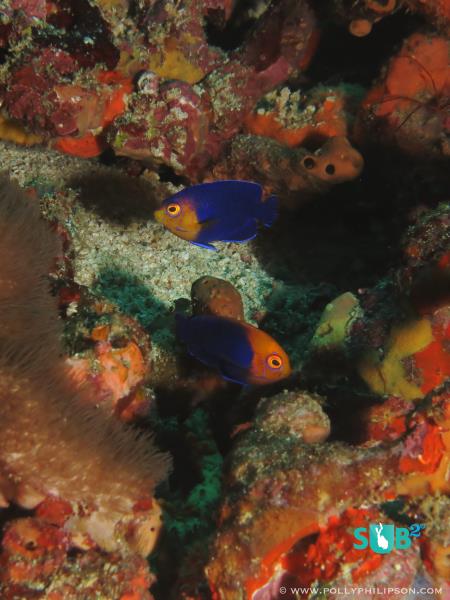 Directory of 59 Dive Sites or Spots for Scuba Diving in Tobago, Trinidad and Tobago
Directory of 59 Dive Sites or Spots for Scuba Diving in Tobago, Trinidad and Tobago
Part 2: Dive Sites, Marine Life & Environment in Tobago, (Trinidad and Tobago)
Tobago has very healthy coral reefs and an extraordinary diversity of marine life. For this reason, it is one of the best, unrivalled dive destinations in the Caribbean region. From pelagic fish to critters - Tobago always astounds, and experienced Caribbean divers will thoroughly enjoy this unspoiled oasis of abundant aquatic life. Divers are frequently treated to hammerhead and manta encounters from April-June, and large schools of fish are common. Tarpon, lobsters, eels, nurse sharks, and turtles are all regular visitors. Don't be distracted by all the big stuff, as the muck diving is a delight too. From rare giraffe garden eels to black brotula and nudibranchs, the critters are out in force.
Known as the “Drift Diving Capital of the Caribbean”, strong currents (especially on the Atlantic side) sweep past the island, making the diving sometimes challenging, but always exciting. Divers should carry a personal DSMB and audible signaling device for extra safety precautions. Visibility can vary depending on season and location. The Atlantic dive sites average 80ft, although sea and weather conditions will also dictate the visibility along the coastline. The Orinoco River is responsible for the nutrient-rich water that attracts all the amazing life; however, it does turn the water a glorious green with a distinct thermocline. The Caribbean coast is less affected and visibility ranges between 70-100ft.
The Sisters is a dramatic dive, not for the faint-hearted. Located on the northwest coast, this collection of five pinnacles burst up from the sea floor at 190ft (60m) to within 50ft (15m) of the surface. This is the place to see larger pelagic life such as hammerheads and manta; November to February is said to be the best time for them to show up. The pinnacles are covered in huge sponges, swaying deep-water fans, and bright corals. Schooling chromis dance around the structures and barracuda prowl the blue.
MV Maverick is the purpose-sunk wreck of the old Trinidad-Tobago car ferry. Sitting on a sandy bottom at 100ft (30m), she reaches 60ft (18m) at her shallowest point. Schooling fish congregate around her impressive bulk, and she is well decorated by corals and sponges. Interesting critters are found on and around the wreck, and divers can explore the open hold.
Japanese Gardens is a spectacular dive site where divers first drift along a sloping coral section in 20-60ft (6-18m) of water. A variety of colorful sponges and sea whips add vibrancy to the reef. Divers are shot through a rock corridor called "Kamikaze Cut" at an amazing pace, to be spat out into a calmer area to catch their breath. Thrilling for all levels of diver!
Mount Irvine Wall is a superb macro dive, full of interesting critters such as nudibranchs and seahorses. The shallow depth of 50ft (15m) allows divers plenty of time to explore and take photos. Turtles and spotted eaglerays are also frequent visitors to this delightful site.
Read "Part 1: Overview of Scuba Diving in Tobago, (Trinidad and Tobago)"
Read "Part 3: Dive Shops, Airports & Logistics of Diving in Tobago, (Trinidad and Tobago)"


